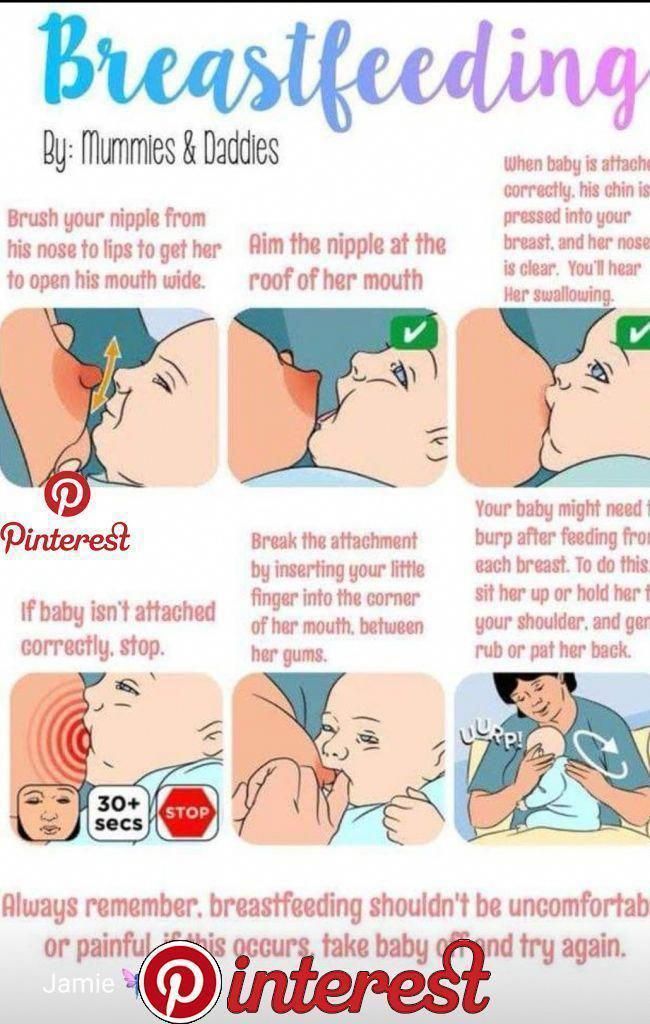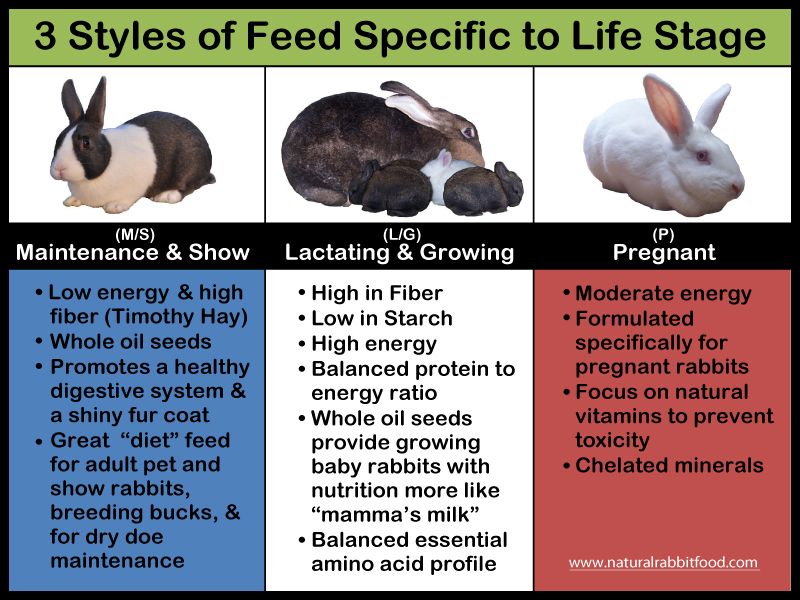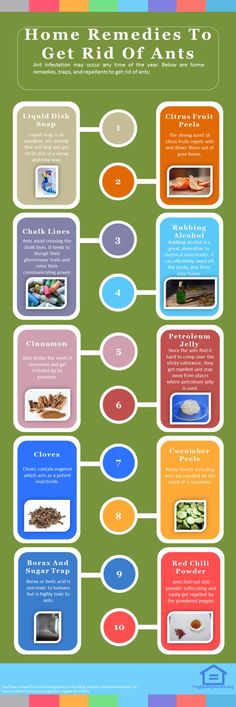Should you wind a baby straight after feeding
How and When to Burp Your Baby
A key part of your baby's feeding routine is burping him. Your baby may swallow lots of air while feeding, and burping can help remove some of that gassiness and ease his fussiness. It may also help prevent him from spitting up.
Find out how to burp your baby, and pick up some tips on making burping more effective.
How to Burp Your Baby: Positions to Try
Here are three burping techniques that have stood the test of time. After trying each of them out, you’ll probably settle on one that works best for you and your baby:
Hold your baby upright against your chest with his chin on your shoulder, all the while supporting him with one hand as you gently pat his back with your other hand.
Place your baby on your lap with him sitting up, all the while supporting his head and chest with one hand while you softly pat his back with your other hand.
Lay your baby on your lap with his belly faced down, all the while supporting his head so it’s higher than his chest, and pat his back.
Tips for Burping Your Baby
Try these tips the next time you need to burp your baby:
Use repeated, gentle pats on her back.
Cup your hand slightly as you pat her, as this is gentler than using a flattened palm.
Drape a towel or bib over your lap or shoulder to protect your clothing as you burp your baby, in case your baby spits up (sometimes called “wet burps”).
Now that you know how to burp your baby, and these tips help you do so effectively, here’s a helpful visual guide:
How Long Should You Burp Your Baby?
There is no specific length of time needed for burping your baby. The more important factor is how often you burp him. With that in mind, burp your baby frequently throughout feeds, even when it looks like he doesn’t need to be burped.
Waiting until after a feeding to burp your baby may mean your little one has swallowed too much air and may be fussier, so it’s better to stop feeding every so often and try to burp your little one. You could also try paced bottle feeding, which slows the flow of breast milk or formula from the bottle, which could help prevent gas.
You could also try paced bottle feeding, which slows the flow of breast milk or formula from the bottle, which could help prevent gas.
Here are some tips for burping your baby during a feeding:
If you’re bottle feeding (which can include formula feeding or offering expressed breast milk), you’ll want to burp him after every two to three ounces of milk.
If you’re breastfeeding, burp your baby each time he switches breasts. Some breastfed babies may not need to burp as often, as they may not swallow as much air.
If your baby hasn’t burped after some time, go back to feeding. Not every baby burps every time you want him to burp.
If your baby shows any of the following signs, you may want to burp him more regularly — for example, after every ounce of milk during bottle feeding or every five minutes during breastfeeding:
He is gassy
He spits up frequently
He has Gastroesophageal Reflux Disease (GERD)
He seems very fussy.

After a feeding is over, keep your baby in an upright position for 10 to 15 minutes. This can help prevent him from spitting up. You may need to burp him longer if he does spit up or has been diagnosed with GERD.
Other Instances When Burping Your Baby Might Be Beneficial
If your sleeping baby wakes suddenly and you suspect it may be because of gas, burping her might help relieve the pressure and help her fall back asleep.
A colicky baby, who may cry for three or more hours per day, might have gas from all the air she’s swallowed during one of these crying spells. You may consider burping her to see if it helps comfort her.
We hope these tips can help you burp your baby during feeding time to ensure she’s more comfortable.
Don’t forget to stock up on plenty of diapers, which you will surely need after all these feedings and burpings. Get rewarded for your Pampers purchases by using the Pampers Club app to earn rewards like coupons, gifts, and gift cards.
Burping Your Baby (for Parents)
Reviewed by: Madhu Desiraju, MD
Primary Care Pediatrics at Nemours Children's Health
en español Hacer eructar a su bebé
An important part of feeding a baby is burping. Burping helps to get rid of some of the air that babies tend to swallow during feeding. Not being burped often and swallowing too much air can make a baby spit up, or seem cranky or gassy.
How to Burp Your Baby
When burping your baby, repeated gentle patting on your baby's back should do the trick. Cup your hand while patting — this is gentler on the baby than a flat palm.
To prevent messy cleanups when your baby spits up or has a "wet burp," you might want to place a towel or bib under your baby's chin or on your shoulder.
Try different positions for burping that are comfortable for you and your baby. Many parents use one of these three methods:
- Sit upright and hold your baby against your chest. Your baby's chin should rest on your shoulder as you support the baby with one hand.
 With the other hand, gently pat your baby's back. Sitting in a rocking chair and gently rocking with your baby while you do this may also help.
With the other hand, gently pat your baby's back. Sitting in a rocking chair and gently rocking with your baby while you do this may also help. - Hold your baby sitting up, in your lap or across your knee. Support your baby's chest and head with one hand by cradling your baby's chin in the palm of your hand. Rest the heel of your hand on your baby's chest, but be careful to grip your baby's chin, not the throat. Use the other hand to pat your baby's back.
- Lay your baby on your lap on his or her belly. Support your baby's head and make sure it's higher than their chest. Gently pat your baby's back.
If your baby seems fussy while feeding, stop the session, burp your baby, and then begin feeding again. Try burping your baby every 2 to 3 ounces (60 to 90 milliliters) if you bottle-feed and each time you switch breasts if you breastfeed.
Try burping your baby every ounce during bottle-feeding or every 5 minutes during breastfeeding if your baby:
- tends to be gassy
- spits a lot
- has gastroesophageal reflux (GER)
- seems fussy during feeding
If your baby doesn't burp after a few minutes, change the baby's position and try burping for another few minutes before feeding again. Always burp your baby when feeding time is over.
Always burp your baby when feeding time is over.
To help prevent the milk from coming back up, keep your baby upright after feeding for 10 to 15 minutes, or longer if your baby spits up or has GERD. But don't worry if your baby spits sometimes. It's probably more unpleasant for you than it is for your baby.
Sometimes your baby may awaken because of gas. Picking your little one up to burp might put them back to sleep. As your baby gets older, don't worry if your child doesn't burp during or after every feeding. Usually, it means that your baby has learned to eat without swallowing too much air.
Babies with colic (3 or more hours a day of continued crying) might have gas from swallowing too much air during crying spells, which can make the baby even more uncomfortable. Check with your pediatrician before giving your baby anti-gas drops.
Reviewed by: Madhu Desiraju, MD
Date reviewed: June 2022
9 rules of conception - what to do to increase the chances of conceiving a child
Sometimes it happens that it is not possible to conceive a child immediately, but after several unsuccessful sexual intercourses, you should not sound the alarm and diagnose yourself with infertility. Perhaps your “stork”, who will bring you a baby, just needs to actively help.
Perhaps your “stork”, who will bring you a baby, just needs to actively help.
Rule 1
Everyone knows that the male reproductive cell is the basis of conception, therefore, a certain energy is required from the spermatozoon to ensure its mobility, because an energetic spermatozoon is able to go further, and one should not expect conception from a weak one. And if pregnancy occurs, then there is a high risk of DNA breakdowns, which lead to a missed pregnancy or spontaneous abortion. That is why, two weeks before the decisive sexual intercourse, you need to start preparing a man. To do this, you need to start feeding him properly: include more meat, nuts, vitamin E in the diet. Such nutrition will help increase sperm motility. nine0003
It is worth noting that the excessive activity of partners for conception is not only useless, but also harmful. Therefore, before the decisive sexual intercourse, a man should abstain for 2-3 days in order to accumulate energy. One couple went to the doctor because they could not conceive a child. During the conversation, it turned out that the couple wants a child so much that they have sex 2-3 times a day. After that, the doctor advised to abstain from sex for several days. Following the recommendation of the doctor, the couple managed to conceive a child. nine0003
One couple went to the doctor because they could not conceive a child. During the conversation, it turned out that the couple wants a child so much that they have sex 2-3 times a day. After that, the doctor advised to abstain from sex for several days. Following the recommendation of the doctor, the couple managed to conceive a child. nine0003
Rule 2
The first intercourse is decisive for conception. All further acts in the evening or night are just for fun. The fact is that after the first sexual intercourse, the concentration of spermatozoa decreases by almost half, so subsequent ejaculations, as experts joke, are one water.
Rule 3
Immediately after ejaculation, a man should remove the penis from the vagina to help the sperm to penetrate further, which greatly increases the likelihood of conception. nine0003
Rule 4
The female orgasm can prevent conception. This happens because during orgasm, the cervix rises a little, so the spermatozoa have to climb this peak, which significantly reduces the chance of one of them reaching the egg.
Rule 5
Proper timing of conception plays a significant role in conception. A woman is more fertile in the middle of the cycle, when the egg matures (ovulation period). 5-6 days before ovulation are also considered favorable: this is how long a sperm cell can live, waiting for an egg and remaining capable. The period within 6 days after ovulation is also considered favorable, since the female egg remains viable during this period of time. nine0003
Rule 6
Douching with baking soda before intercourse can significantly increase your chances of getting pregnant. It is known that a woman may have hidden inflammation, which she does not even know about. As a result of inflammation, an acidic environment arises, which is extremely harmful to spermatozoa and can not only significantly reduce their activity, but even completely destroy them. If there is no inflammation, then douching still does not hurt.
7 rule
The actions of a woman after intercourse are of great importance. Little depends on the man and he can safely go to the shower, but the woman should lie down for a while. With the normal position of the uterus and cervix, it is best to lie on your back, while pressing your knees to your chest. If a woman has a bend of the uterus, it is better to lie on her stomach. These positions allow the cervix to sink freely into the semen pool, which increases the chance of sperm penetration. There are also specific cases, for example, when there is inflammation of the appendages. In this situation, the uterus can turn to the side, but in which one - this can only be determined by a gynecologist at a consultation. Then the doctor can tell you exactly which side is better to lie on. nine0003
Little depends on the man and he can safely go to the shower, but the woman should lie down for a while. With the normal position of the uterus and cervix, it is best to lie on your back, while pressing your knees to your chest. If a woman has a bend of the uterus, it is better to lie on her stomach. These positions allow the cervix to sink freely into the semen pool, which increases the chance of sperm penetration. There are also specific cases, for example, when there is inflammation of the appendages. In this situation, the uterus can turn to the side, but in which one - this can only be determined by a gynecologist at a consultation. Then the doctor can tell you exactly which side is better to lie on. nine0003
8 rule
Choosing the right position can greatly increase your chances of conceiving a child. Unfortunately, the choice of correct poses is not great - this is the classic missionary pose. But if you try to get pregnant, for example, while standing, then the liquid will simply pour out. There is indeed an exception. If a woman has a uterine bend, then the back position is suitable.
There is indeed an exception. If a woman has a uterine bend, then the back position is suitable.
Rule 9
After sexual intercourse, it is imperative to relax and preferably be in an excellent state of mind for the next few days. Meditation, nature walks, outdoor activities, etc. can help with this. Waiting and worrying is not the best condition for this period. In a state of stress, the contractile activity of the fallopian tubes, which promote spermatozoa to the egg, is disrupted. Listen to the recommendations of gynecologists and you will succeed. nine0003
How to wake up a baby for feeding and whether it is necessary to wake up a baby in the afternoon
05/29/2020
95
For any parent, the question of whether to wake up a baby is not an easy one. On the one hand, there are fears that a child who has been sleeping for a long time will not be able to fall asleep later, and on the other hand, how to raise such an angel who has been put to bed for so long. ..
..
so that his sleep is not affected.
Let's start with the smallest children. You've probably heard the phrase "never wake a sleeping baby." But it is not always fair. Some newborn babies wake up on their own for feedings, while others need to be awakened. Whether or not you need to wake your baby depends on their age, weight, and overall health. nine0003
The American Academy of Pediatrics recommends waking your baby for feedings if he sleeps more than 4 hours in the first two weeks of life. On average, a baby needs feeding every 2-3 hours.
Frequent feeding is very important for several reasons:
- The baby's stomach is very small, the baby quickly digests breast milk. Faster than a mix. Therefore, physiologically, the child necessarily needs frequent feedings every 2-3 hours.
- Babies can sometimes sleep even when hungry, thus malnourished, which affects their development. nine0064
- After birth, the baby loses 5-10% of its body weight.
 And in the first weeks he needs to gain weight. Lack of milk or formula slows down this process.
And in the first weeks he needs to gain weight. Lack of milk or formula slows down this process. - A short interval between feedings helps to maintain lactation. That allows you to avoid problems with a shortage of milk in the future.
Tears already signal strong hunger. Therefore, it is better to breastfeed the baby before the baby starts crying. Learn to recognize the early signs of hunger: the baby puts his hand in his mouth, smacks his lips, tossing and turning when he sleeps. nine0003
Should the baby be woken up to feed during the day? In general, if an infant sleeps for more than 3 hours in one dream during daylight hours, he must be awakened. Then the mother can feed the already awakened baby. This makes it possible to adjust the work of the biological rhythms of the baby.
How to Wake Up
- Help your child gradually fall asleep by stroking their arms, legs or lightly tickling them.
- Change diaper. Often this is enough for the baby to wake up and be ready to eat.
 nine0064
nine0064 - Undress and place skin to skin on your chest. You can squeeze a few drops of milk onto your baby's mouth. He will smell and taste it and begin to suck on the breast.
- Speak - he will hear your voice and wake up.
- Do not turn on bright lights. A dim light is sufficient. The bright light will blind your eyes.
- If the baby has applied to the breast but has not begun to suckle, stroke his cheek.
How long to feed
As soon as the baby wakes up and starts to eat, make sure that the feeding is long enough to empty at least one breast. So we will know that he ate hind milk, which is necessary for the growth of the child's body. Some babies take 45 minutes or more to feed one breast, and some do it in 10 minutes.
The sucking reflex promotes falling asleep. Therefore, make sure that the baby does not fall asleep while feeding. If he falls asleep, change position, lift him up to burp, and then start feeding again. nine0003
nine0003
By 6 months you will have a more or less predictable eating schedule. But each baby will have his own. Some of the children eat every 2 hours, and someone is able to stay without food for 3-4 hours by the second month of life. This is especially true for children who are formula fed.
The length of time between feedings increases as the child grows older. By the age of six months, many babies can already go without supplements at night or are able to sleep for longer periods.
nine0002 If a child wakes up too often after 6 months and asks for food at night, perhaps this is no longer hunger, but a way to relax and fall asleep.
Avoid using a pacifier in the first weeks after delivery. The pacifier helps the child to calm down and prolong sleep. So you may not notice that your baby is hungry. Therefore, start using a pacifier no earlier than 4-6 weeks and when you are lactating.
Should the baby be woken up to feed formula? As with breastfeeding, the newborn needs frequent formula feeding. But the interval will be more than 3-4 hours. nine0003
But the interval will be more than 3-4 hours. nine0003
When it is necessary to wake up the child
It is important to wake up the baby in the morning if he slept late after 7.00. This is especially true for children who still sleep 1-2-3 times during the day and have already developed a relatively stable routine. So you create the perfect routine in the morning.
After waking up, children need time to work up their fatigue for their next nap, the ideal window for which is around 9 and 1 pm (depending on age).
Therefore, if the baby slept until 8 am, he simply will not be able to fall asleep in his first daytime sleep. nine0003
In order for the baby to wake up calmly without tears, you can enter a wake-up ritual. It allows the child to smoothly transition from a sleepy state to wakefulness.
Example of a wake-up ritual:
- Opening curtains/lights on
- Welcome words and a kiss
- Snacks, nursery rhymes after sleep
- Cheerful song
Then you can get up and start breakfast. For older children, such a ritual is also necessary. nine0003
For older children, such a ritual is also necessary. nine0003
The awakening ritual has different purposes:
- Marks the end of sleep,
- Teaches a child that everyday sounds are not a reason to wake up,
- Helps prevent baby from crying when waking up.
It will also be useful to have a light alarm. If the baby wakes up early, he will stay in bed until he sees the light on the clock.
When to wake your baby up after a nap
Many babies from 4 to 8 months sleep three times a day. nine0003
In this mode, it is important to wake up the baby after the third nap no later than 17.00. The duration of this segment is about 45 minutes, but not more than an hour. Then you can easily put the baby to bed by 19 o'clock.
Transition to one nap
At the age of 15-18 months there is a transition to one nap. It can be long and take place in different ways.
For example:
In the morning, the baby falls asleep easily and sleeps up to 2 hours. But then it is difficult to put it in lunch. And by the evening without rest at lunchtime, he is already overworked and falls asleep with difficulty. nine0003
But then it is difficult to put it in lunch. And by the evening without rest at lunchtime, he is already overworked and falls asleep with difficulty. nine0003
So if this is your case, you can pick up the baby after 60-75 minutes. At the same time, move the start of the second sleep 15 minutes later. But if the baby sleeps for 1 hour in the morning and then it’s already difficult to fall asleep a second time, start putting him down only at lunchtime.
One nap after 2 years
Between 2.5-5 years, naps may disappear. Here again, the story described above is often repeated. It seems that the child falls asleep perfectly during the day, sleeps for a long time, but in the evening, laying down is delayed until 10-11 pm. The problem is that getting up early in the morning to the garden usually does not allow you to sleep the necessary 10-11 hours per night. And again, you will have to gradually limit the duration of daytime rest. Wake your baby up after 60 minutes first, then skip the daytime so your baby sleeps better at night.











